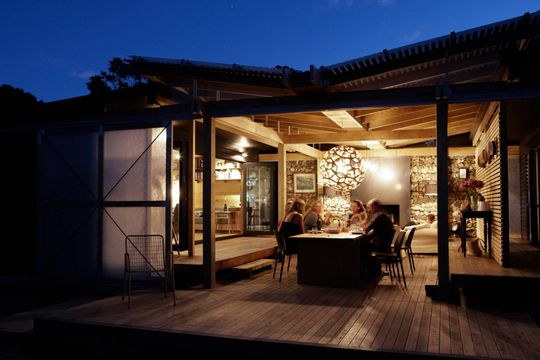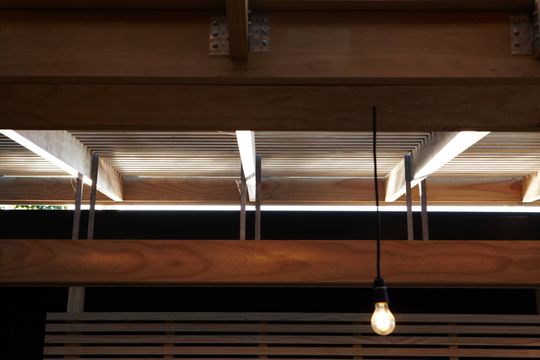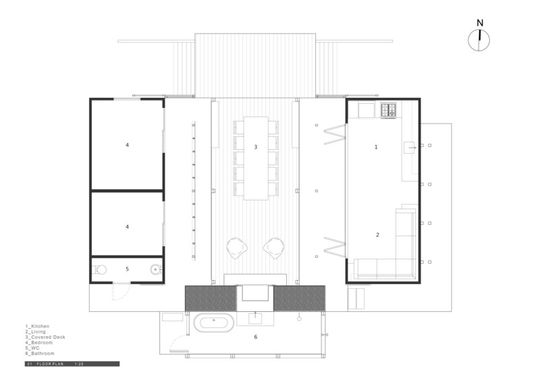We all know that feeling. You've picked up something online or (if you're anything like Darryl Kerrigan) in the Trading Post, but once the dopamine rush of the purchase has worn off and you get it home, you realise it's not quite as perfect as you first thought. But what if that steal of a purchase is actually a home? Well, two portable cabins, to be precise...

Buyers remorse certainly hit Mark Izzard and Roanne Parker after they picked up two cabins for $40,000. One contained a kitchen and living area, the other a couple of bedrooms and a toilet. While the cabins weren't much to look at, they would allow the couple to set up the perfect affordable retreat for themselves on their 20-hectare property on New Zealand's Waiheke Island. Unfortunately, council didn't see it the same way. The problem was, even though the cabins came complete with wheels for portability, the local council still considers them buildings and requires building approval.
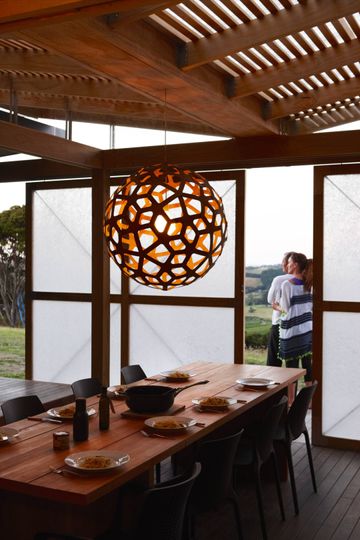
The silver lining? Because the Mark and Roanne needed consent anyway, they brought Herbst Architects onboard to design something to do justice to their spectacular property, something more practical and, let's face it, something more attractive.
Herbst Architects recognised the challenge of transforming these low-cost cabins into a home appropriate for the site and for the family's needs. For one, the cabins were only 2.8 metres wide, which really isn't enough for a usable living space.

The architects' clever solution was to leave 7 metres between the two cabins and fill the space in between with a covered deck to become a sheltered outdoor living space. A dramatic butterfly roof fills the void. It's clad in translucent fibreglass sheeting which makes it waterproof, but lets diffuse light through. Additional battens underneath the sheeting bathes this indoor/outdoor space in dappled light reminiscent of sitting under the shade of a tree.

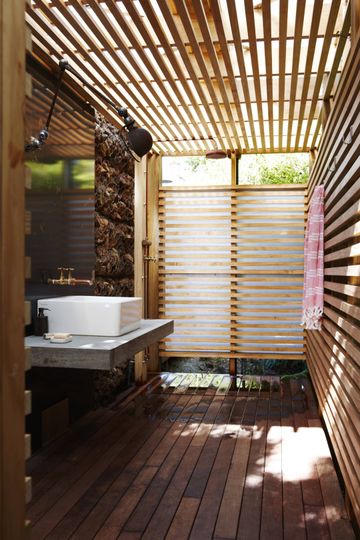
The use of battens is continued to create a privacy screen between the living areas and the bedroom wing. Battens are again employed in the bathroom to offer privacy without sacrificing the sense of abluting with nature.
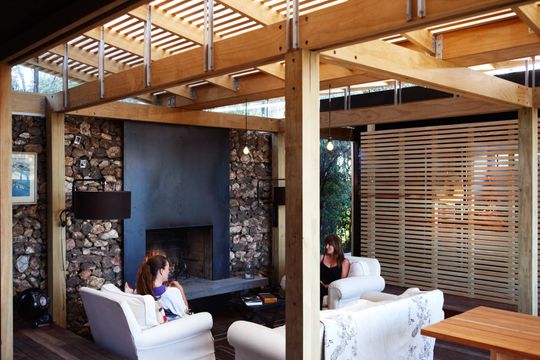
A massive gabion-basket wall filled with stone from a nearby quarry anchors the living area, gives a sense of solidity to the space. A fireplace nestled into the caged stone keeps the living area warm and plays on the idea that this is a glorified campsite.
